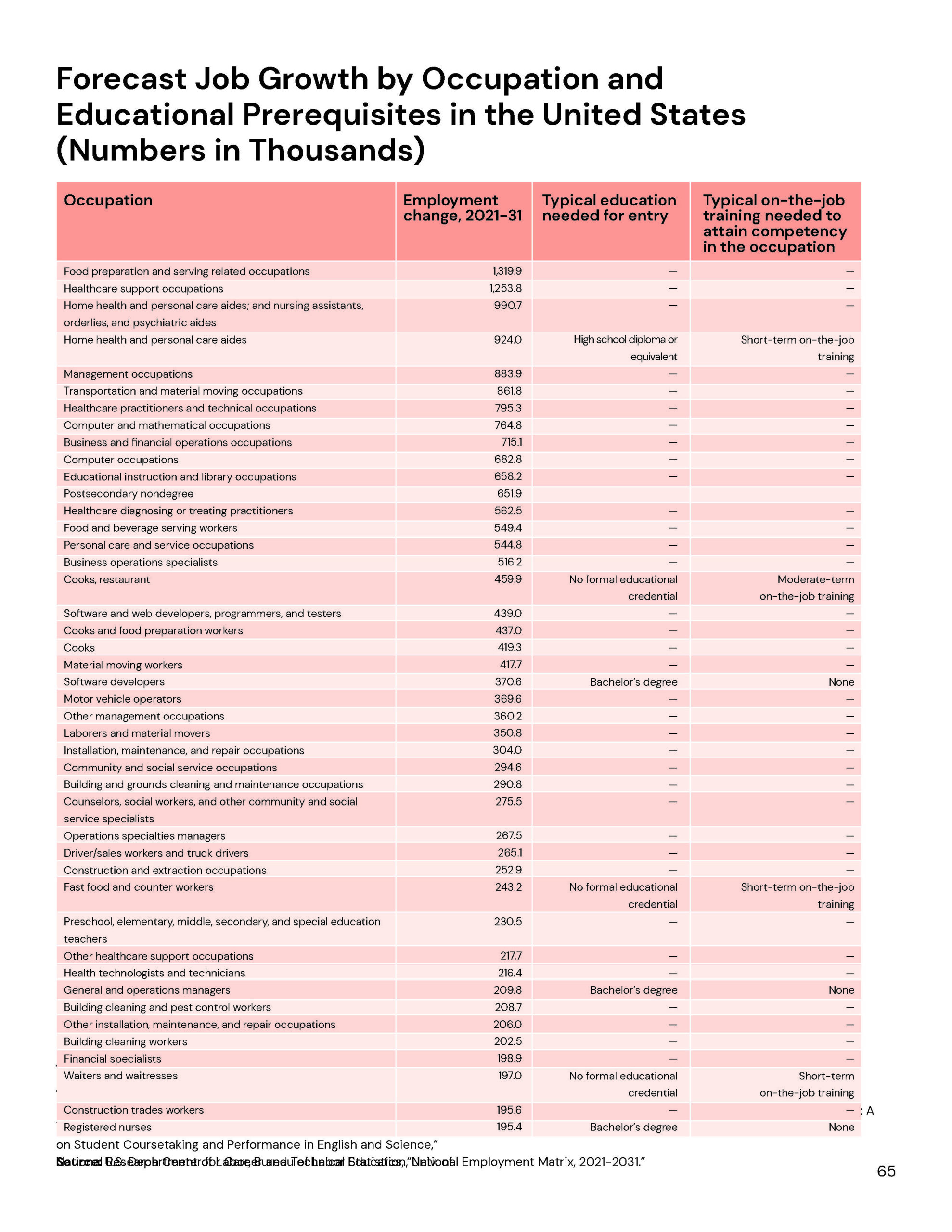Vocational Education
Nevada’s K-12 educational curriculum emphasizes preparing students for advancement to higher education at the expense of preparing students for the job market.
Certainly, a college-preparation track is a necessary and valuable component of the K-12 curriculum. However, often neglected are the “forgotten half” of students who are unlikely to attend college.1 For these students, formal training in a skilled trade that will provide meaningful employment upon graduation is the highest value the educational system can offer. Unfortunately, school districts in Nevada have been slow to attend to this demographic – leaving graduates unprepared for the job market.
Key Points
Most employers are seeking skills, not degrees. According to statistics from the U.S. Department of Labor, only 6.49% of jobs nationwide require applicants to hold a bachelor’s degree or higher in order to be competitive. By 2031, this figure will increase only slightly – to 6.70%.2 Possession of a postsecondary vocational credential accounts for an additional 1.4%.3
The proportion of Nevada residents holding degrees exceeds base employer demand. Despite the many problems with public education in the Silver State, the U.S. Census Bureau reports that 27.0% of Nevadans age 25 and older hold a bachelor’s degree or higher.4
At-risk students are most likely to excel in vocational education programs. With the lowest high-school graduation rate in the nation, Nevada’s public schools suffer from extraordinarily high dropout rates. Research has shown that students suffering from one or more “at-risk” conditions have a more difficult time staying on task during academic activities and are less likely to graduate.5 However, these students have performed much better when enrolled in vocational training programs.6
At-risk students, such as those for whom English is a second language or whose parents did not graduate high school, are numerous in Nevada. This undoubtedly contributes to the state’s historically low graduation rates. It also renders the inclusion of vocational programs into the educational curriculum even more important.
It is better to prepare at-risk students for meaningful employment upon graduation than to allow their academic frustrations to result in higher dropout rates and reduced lifetime earning potentials.
Recommendations
Encourage systematic integration of vocational training into the educational curricula. To prepare many more students for success in the labor market, the Nevada Legislature should incentivize Nevada school districts to replicate statewide the highly successful model provided by Reno’s Academy for Career Education (ACE High School) charter school. Enthusiastically backed by private-sector professionals, ACE cost-effectively integrates sound, professional career training into a rigorous academic curriculum – reflecting exactly the kind of reforms that have proven most effective in national longitudinal studies.7 The Lone Star State’s Achieve Texas program8 can provide Nevada lawmakers and local groups with additional, highly valuable guidance – including a statewide career initiative model for the Nevada Department of Education.

1 Robert Schmidt, “Teaching the Forgotten Half: Career and Vocational Education in Nevada’s High Schools,” NPRI policy study, 2006.
2 U.S. Department of Labor, Bureau of Labor Statistics, Employment Projections Program, “National Employment Matrix, 2021-2031.”
3 Ibid.
4 U.S. Department of Commerce, U.S. Census Bureau, American Community Survey, 2022.
5 See, e.g., Greg Druian and Jocelyn Butler, “Effective Schooling Practices and At-Risk Youth: What the Research Shows,” Office of Educational Research and Improvement (OERI), U.S. Department of Education, 1987
